Since the 1980s, with the development and production of professional commercial micro-root window ecological observation instruments by Bartz, the micro-root window technology (Minirhizotron) has been widely used and has become the main technical means of current root dynamic research.
The BTC-100 Root Ecosystem Monitoring System is a classic root monitoring device based on Minirhizotron technology, designed and produced by Bartz Corporation of the United States. More than 80% of the international roots research papers published using Minirhizotron technology use Bartz's BTC-2 or BTC-100 (an upgraded version of BTC-2), including publications: Agriculture, Ecosystems and Environment; Plant, Cell And Environment;Journal of Arid Environments;Tree Physiology;HortScience;Environmental and Experimental Botany;Journal of Ecology;Agricultural and Forest Meteorology;Crop Science;Ecological Monographs;PNAS (Proceedings of the National Academy of Sciences of the United States of America);Plant Root; Agromomy Journal; Climate Change; Journal of Experimental Botany; Journal of Plant Research; Annals of Botany; New Phytologist; Global Change Biology; Ecosystems; Science; Nature; Plant Soil; Soil Science Society of America Journal; Restoration Ecology; PLOS one and many more. The Chinese Academy of Sciences Ecosystem Research Network (CERN) and the Ministry of Agriculture Discipline Group Construction Project have all purchased BTC-100 in batches to fully adopt the internationally accepted BTC-100 root ecosystem monitoring technology for long-term monitoring of forests, grasslands and wetlands. Root dynamics of different vegetation types such as agriculture. Yi Ketai Ecological Technology Co., Ltd. has collected hundreds of papers published using the BTC Root Ecosystem Monitoring System, which can be downloaded and exchanged.
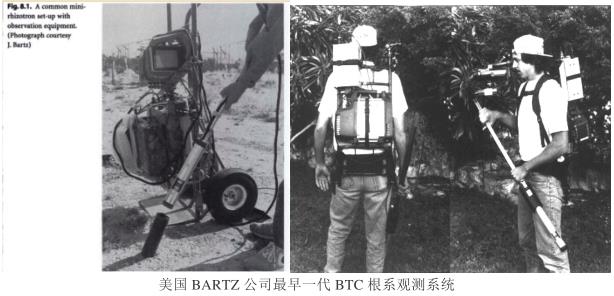
BTC-100 main advantages and features:
1) It has been the main classical instrument technology for root observation research since the 1980s;
2) The most widely published root-based observation instrument technology, covering dozens of top academic journals in the world, including Science and Nature;
3) 15-100 times magnification microscopic video lens, which accurately distinguishes fine roots and even mycorrhizas, is the only root observation research instrument that can be used for mycorrhizal research, and can even observe and analyze underground soil animal activities;

4) Precise positioning system ensures long-term follow-up observation of fine roots;
5) Waterproof, dustproof, oil proof, etc., can be used in various environments (including wetland environment, etc.), and is the most reliable, maintenance-free and most durable root observation instrument;
6) Optional UV light source, in addition to help identify dead roots and live roots, can also be used for quantum dot fluorescence labeling root imaging observation studies. 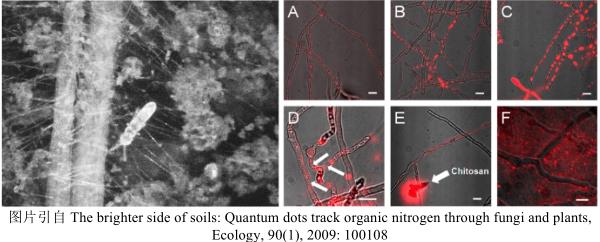
Case 1: Asavanna response to precipitation intensity, PLOS ONE, 2017
As the global climate warms, the frequency of rainfall decreases but the intensity increases. Ryan S. Berry of the University of Utah, USA, observed the response of woody plants and herbaceous plants to the woody plants and herbaceous plants under the conditions of increasing global warming rainfall in Kruger National Park, South Africa. The results showed that rainfall intensity Increase can increase the biomass of woody plants and reduce the biomass of herbaceous plants.


Case 2: Partitioning CO2 fluxes with isotopologue measurements and modeling to understand mechanisms of forest carbon sequestration, Final Technical Report, Terrestrial Ecosystem Science Program, US Department of Energy, 2016
The project uses isotopic techniques, BTC-100 micro-root window observation technology, and fine root respiration measurement technology to conduct continuous observations on the above-ground and underground phenology and ecosystem photo-contracted fluxes and respiratory fluxes in different forests. The results show that the ecosystem's daytime respiration is lower than nighttime respiration—the first evidence of the Kok effect (inhibition of light on leaf respiration) is provided at the ecosystem level; it is also found that the basal phenology of the deciduous forest is more than the coniferous It's more of the same step. The project has published several academic papers and has won numerous awards including Boston University, the American Geophysical Society, the American University Association, and the US Department of Energy.
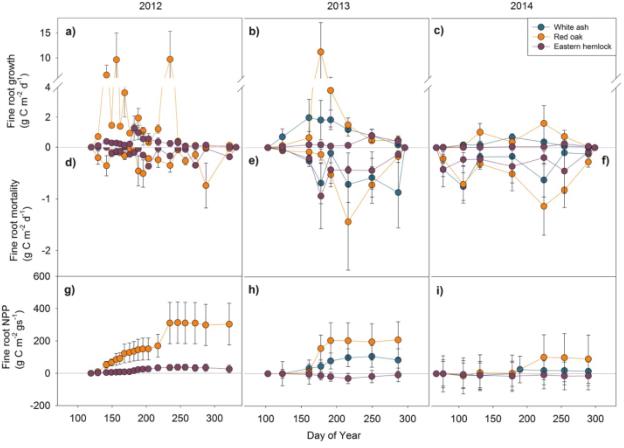

Case 3: Variability in root production, phenology, and turnover rate among 12 temperate tree species, Ecology, 2014
This study was conducted by the Pennsylvania State University and the Chinese Academy of Sciences, M. Luke McCormack and Thomas S. Adams, using the micro-root window root observation technology developed and developed by Bartz in the United States, in the temperate forests of central Pennsylvania, the fine root productivity, phenology and The three-year observational study of the turnover showed that the distribution pattern of fine root production time of different tree species varied greatly. Some trees had the same growth time distribution pattern, and some had annual differences. The root fine root productivity was related to the turnover rate. Turnover rates have high productivity.
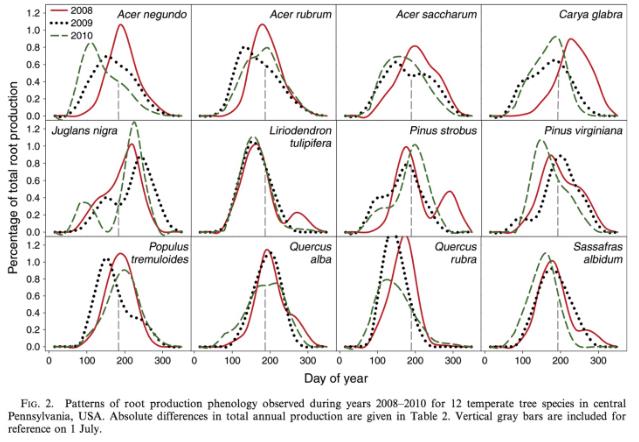
Wetland application case:
CMIversen, National Oak Ridge National Laboratory, published a review paper "Adancing the use of minirhizotrons in wetlands" in Plant Soil in 2011, introducing the application of BTC-100 in wetland research. (It should be noted that BTC-100 has Waterproof function is the only root monitoring device suitable for wetland research). The picture on the right shows some of the characteristics of peat and fine roots commonly found in wetlands observed by the BTC system. Images A, B are photographs taken in different wetlands, A is a black spruce swamp forest in northern Minnesota, and B is an open swamp sanctuary in Lake Ontario, Canada. The picture shows the root system at different depths of the observation tube, scale 0-5cm, 5-10cm, 10-20cm, 20-25cm, 25-30cm five depths, although there are multiple fine roots in multiple pictures, used in research The arrow marks a fine root of long-term positioning observation. The newly grown fine roots can be clearly distinguished from the peat matrix. The old root pigments are more difficult to distinguish from the peat matrix, such as A-5-10cm layer and B. Figure 25-30 cm layer. In addition, the loose peat layer forms a large loose notch layer and can clearly see groundwater.
The following figure shows the results of an ecosystem response study of climate change, including temperature and CO2 elevation, in CM. Iversen et al. in the northern marsh forests of northern Minnesota.
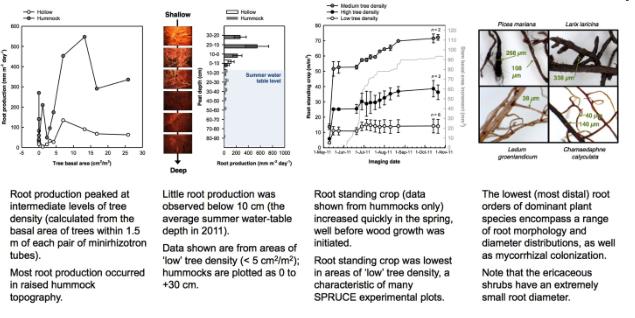
Micro-roots roots ecological and soil soil respiration monitoring application case
Plant fine roots account for 33% of the annual net primary productivity of the Earth's ecosystem (Gill and Jackson, 2000). Although there is still a lack of understanding of mycorrhizal productivity, it is certain that plant fine roots and mycorrhizal CO2 emissions are global carbon. Balance is very important. Professor Rodrigo Vargas (2008) of the Center for Conservation Biology, University of California, USA, used the BTC-100 micro-root window observation system and the SCG soil profile CO2 gradient observation system in the San Jacinto Mountain Reserve to form a soil respiration and root observation station. A comprehensive observational study on soil moisture, fine root dynamics, and soil respiration showed that it is extremely important to continuously observe the fine root dynamics using the BTC-100 micro-window technique. The change in fine root length is observed to be 40 cm per square meter per day, while mycorrhiza The change in length exceeds 100 cm per square meter per day; the dynamic changes of fine roots and mycorrhiza affect seasonal and daily changes in soil respiration; soil CO2 production is a function of roots and microbial biomass, but soil respiration depends on Soil diffusion includes temperature and soil moisture; comprehensive use of BTC-100 micro-window technology and soil respiration measurement techniques (including profile CO2 observation techniques and respiratory chamber measurement techniques) can help us fully understand and deeply understand plant roots and mycorrhiza Contribution to the global carbon cycle (Allen et al., 2007).
The micro-rooted root ecosystem and soil respiration monitoring system provided by Yiketai Eco-Technology is a complete system configuration for the installation of Professor Rodrigo Vargas, including BTC-100 root observation system, SCG-3 soil profile CO2 observation system and ACE automatic The soil respiration monitoring system can monitor and record root dynamics, TRIME-PICO soil profile moisture and temperature, soil profile CO2 concentration, soil respiration (CO2 flux), and meteorological parameters such as air temperature and humidity, solar radiation, and rainfall.
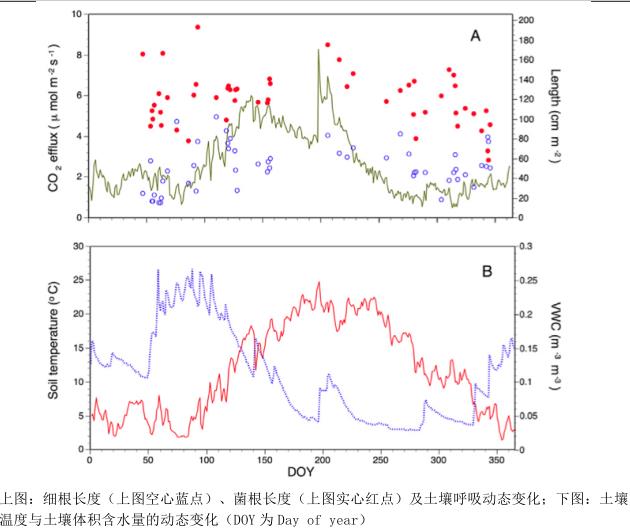

In addition to the above-mentioned custom configuration plan, Yike Taisheng Ecological Technology Co., Ltd. can also provide the following configuration solutions:
Plant photosynthetic physiology and underground ecology research system: the system consists of above-ground multi-channel photosynthesis monitoring, SCG-N underground multi-level CO2 gradient monitoring and TRIME-PICO soil moisture and temperature monitoring, BTC-100 micro-roots The composition of ecological monitoring can comprehensively monitor plant photosynthesis and respiration, underground root respiration and root dynamics and rhizosphere ecology, and simultaneously monitor the dynamic changes of soil moisture, temperature, light and effective radiation, plant stem flow and other parameters.
ET-FMS Portable Rhizosphere Respiratory Measurement Protocol: Rhizosphere respirometry includes soil respiration measurements and root respiration measurements. The ET-FMS Portable Rhizosphere Respiratory Measurement System consists of a host system and a breathing chamber. The host system has a built-in high-precision CO2 analyzer, O2 analyzer, water vapor analyzer, gas sampling unit, data collector, Baseline unit, etc. In-situ chamber and ex-situ chamber, in situ breathing chamber for in situ soil respiration measurements and rhizosphere respiration measurements for isolated root breathing chambers for pure root respiration measurements and Pure soil respiration measurements, etc., root respiration measurements can not only reflect the contribution rate of roots in soil respiration and carbon emissions, but also reflect root activity.
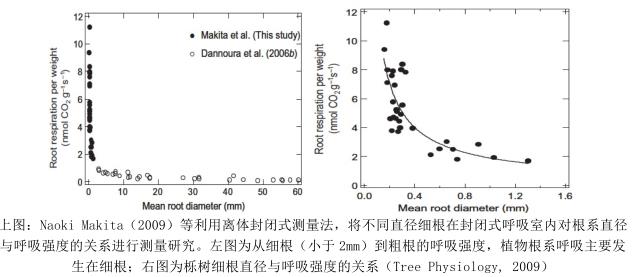
Root flow monitoring technology program: Water transport is one of the important functions of the root system. The EMS-HB root flow monitoring system uses SHB (Stem heat balance) heating technology and THB (Tissue heat balance) heating technology combined with TRIME-PICO soil. The moisture temperature intelligent sensor comprehensively monitors the root fluid flow and its dynamic relationship with environmental factors such as soil moisture.
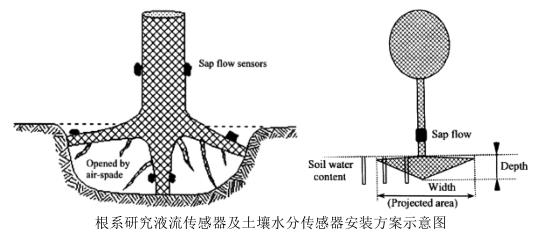
Colorful Safe Boxes,Digital Lock Safes,Combination Lock Safe,Small Hotel Safes
Hebei Yingbo Safe Boxes Co.,Ltd , https://www.yingbosafes.com